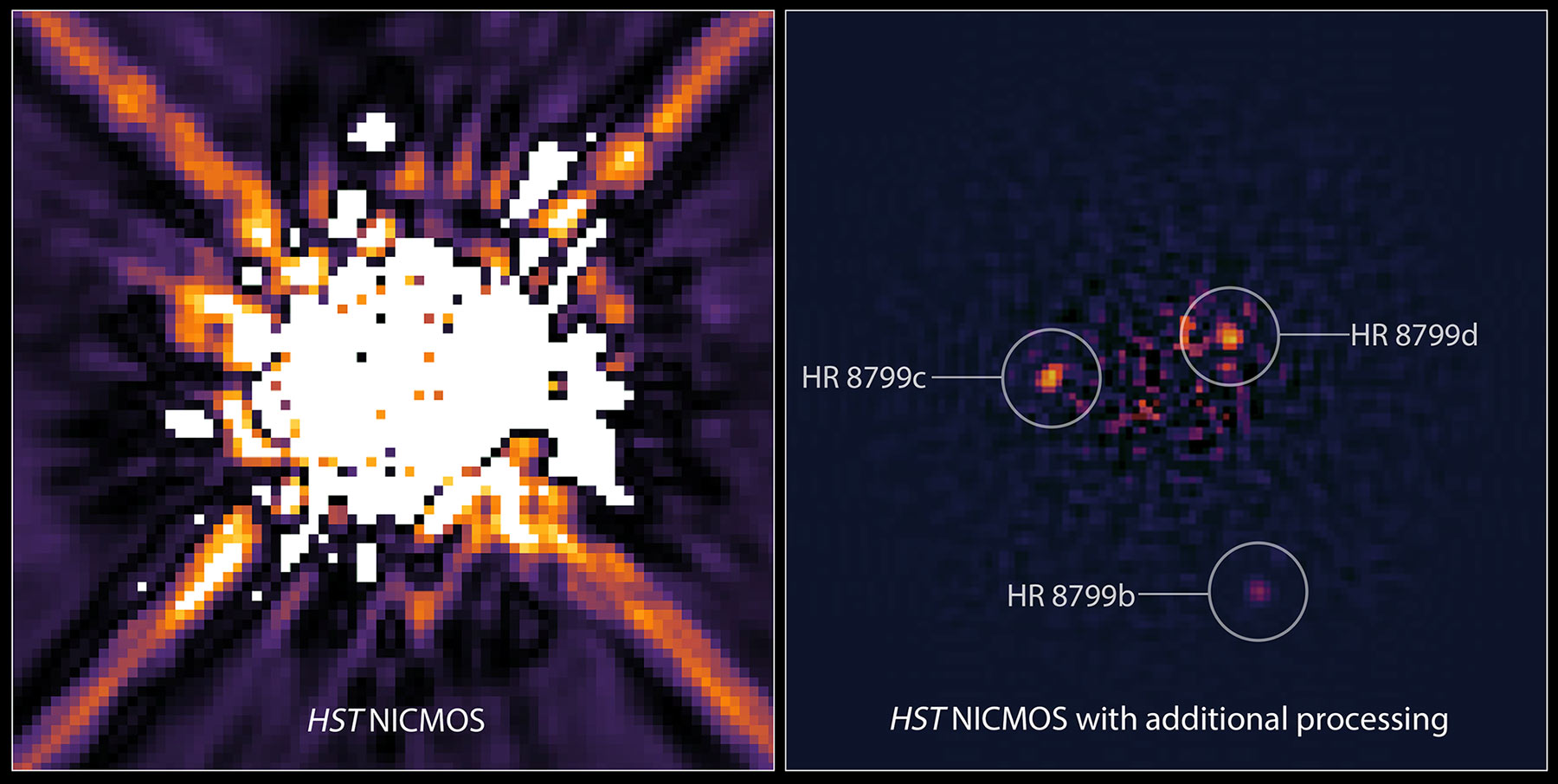STScI: NASA’s Webb to Study Young Exoplanets on the Edge

Left: This is an image of the star HR 8799 taken by Hubble’s Near Infrared Camera and Multi-Object Spectrometer (NICMOS) in 1998. Right: A re-analysis of NICMOS data in 2011 uncovered three of the exoplanets, which were not seen in the 1998 images. IMAGE: NASA, ESA, Rémi Soummer (STScI)
Although more than 4,000 planets have been discovered around other stars, they don’t represent the wide diversity of possible alien worlds. Most of the exoplanets detected so far are so-called “star huggers”: they orbit so close to their host stars that they complete an orbit in days or weeks. These are the easiest to find with current detection techniques.
But there’s a vast, mostly uncharted landscape to hunt for exoplanets in more distant orbits. Astronomers have only begun to explore this frontier. The planets are far enough away from their stars that telescopes equipped with masks to block out a star’s blinding glare can see the planets directly. The easiest planets to spot are hot, newly formed worlds. They are young enough that they still glow in infrared light with the heat from their formation.
This outer realm of exoplanetary systems is an ideal hunting ground for NASA’s upcoming James Webb Space Telescope. Webb will probe the atmospheres of nearby known exoplanets, such as HR 8799 and 51 Eridani b, at infrared wavelengths. Webb also will hunt for other distant worlds—possibly down to Saturn-size—on the outskirts of planetary systems that cannot be detected with ground-based telescopes.
